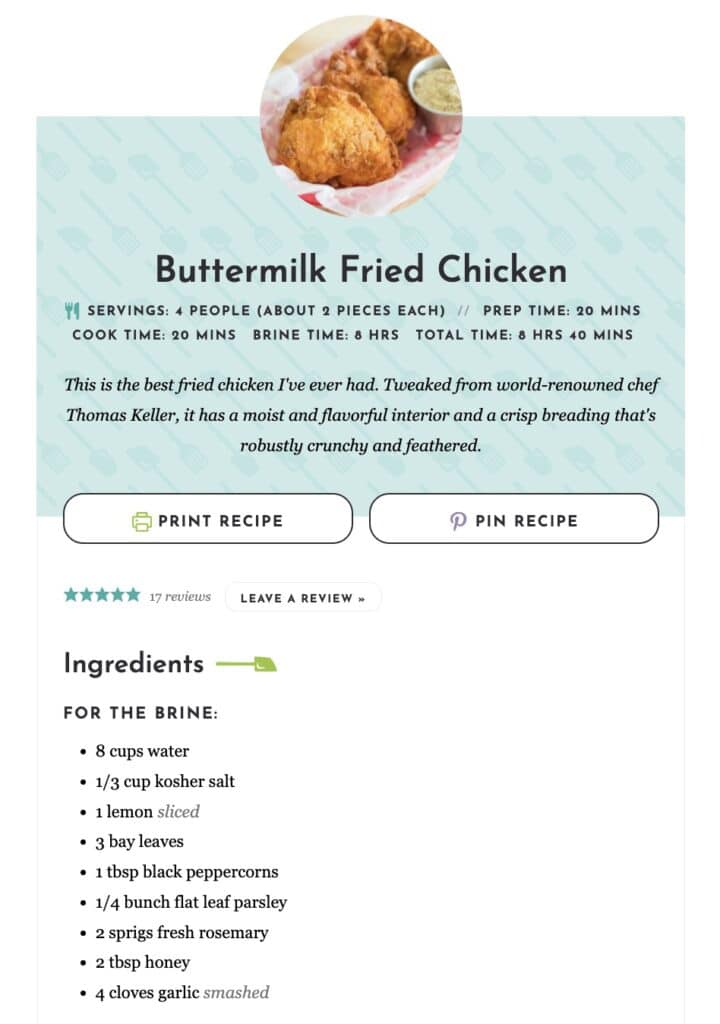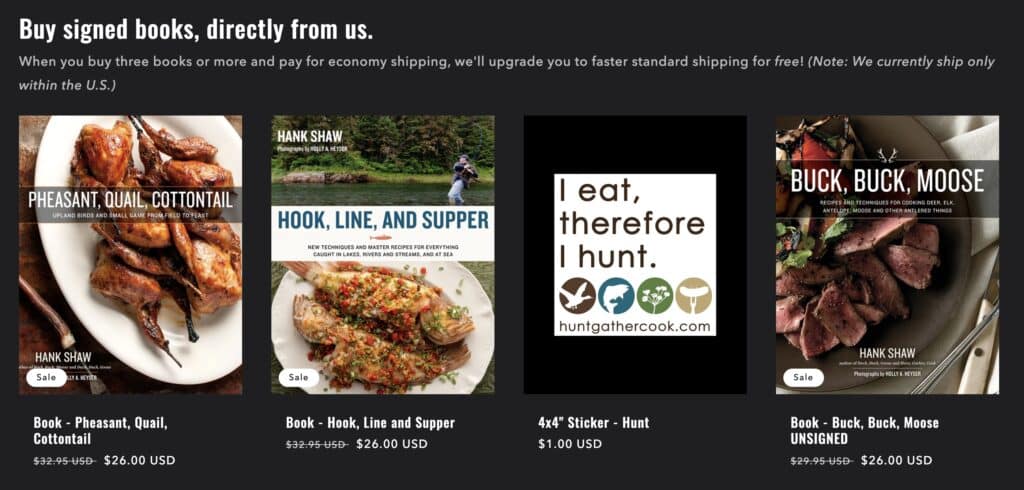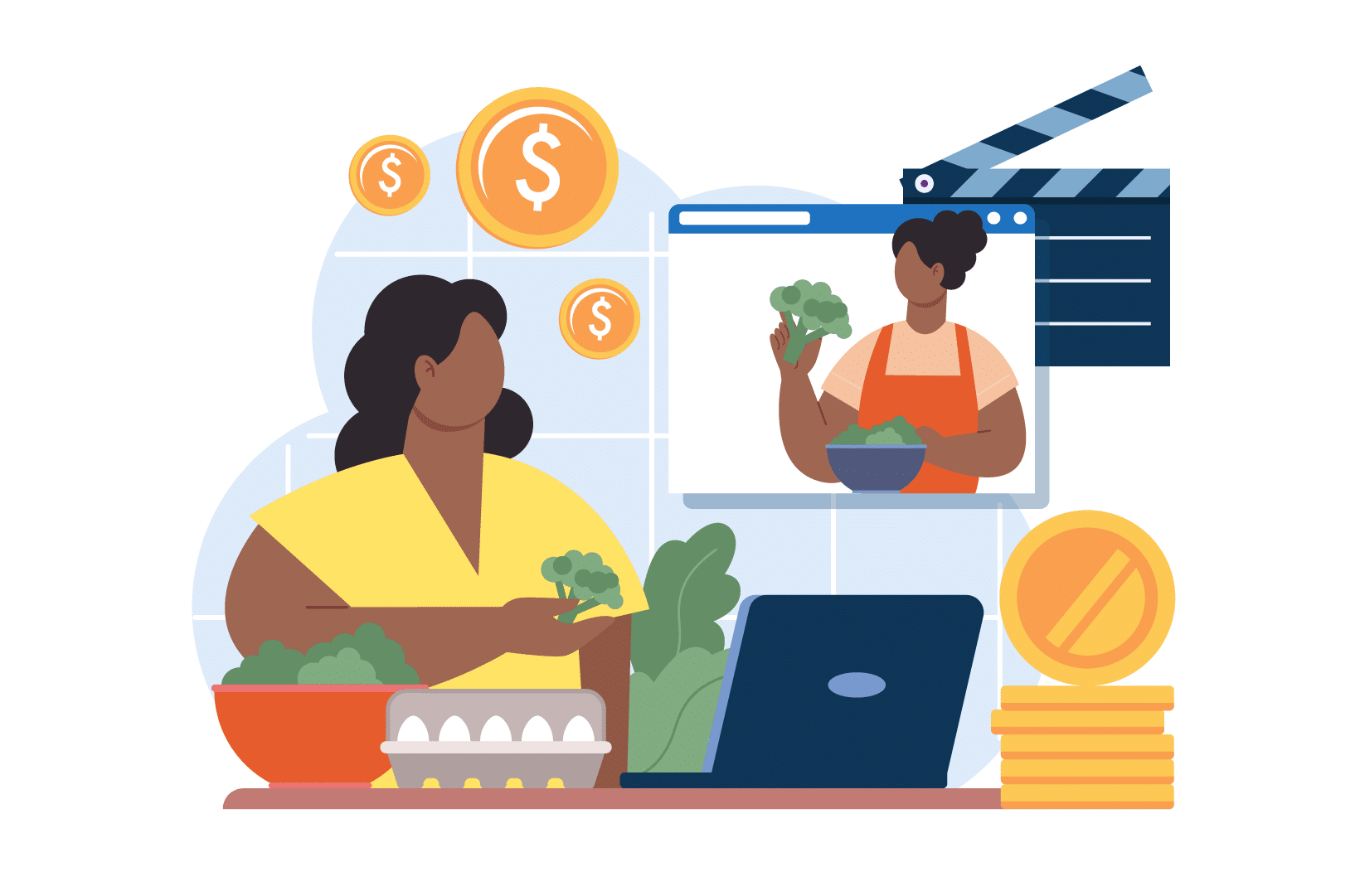Are you ready to start earning an income from your food blog? While many food bloggers run their websites solely for personal enjoyment, there are numerous monetization methods available nowadays that can bring in a part-time or even full-time income.
The key to making money from your own food blog is finding the right monetization strategy for you. Not familiar with the options? Don’t worry; we’ve got you covered. In this post, we’ll explore ten of the most popular methods and provide an overview of the potential salary you can expect to generate from your food blog. Additionally, we’ll recommend some of the best digital tools to maximize your chances of success.
Ready? Let’s dive in!
How much money can food bloggers make?
That’s a significant question, and there isn’t a single answer. Like any money-making pursuit, income can vary greatly. At the top of the chain, food bloggers can earn tens of thousands of dollars each month, while beginner bloggers at the bottom may earn nothing.
Let’s take a look at the earnings of some actual food bloggers to get an idea of what’s possible. Remember, all these bloggers had to start from scratch:
- In 2022, Stephanie’s Sweet Treats earned a total income of $128,000.
- A Sassy Spoon earns an average of $17,000-$21,000 per month.
- Get On My Plate reported earning over $20,000 in Q2 of 2022.
- Thyme and Joy’s income reports show earning anywhere from $4000-$15,000 a month.
- Tiffy Cooks reports earning 45-55K per month
For more examples, check out our related article on how much money food bloggers can make.
Could you earn as much as these examples? Absolutely. They’ve achieved it, and so can you. However, bear in mind that earning a substantial income from food blogging requires consistent effort, hard work, patience, and a well-thought-out monetization strategy. If you can fulfill these criteria, you’ll position yourself well for earning an income.
We also recommend not fixating on specific earnings that established food bloggers are making. Don’t concern yourself with earning as much as A Sassy Spoon, for example, but rather focus on building your own income over time. This will make it much easier to appreciate the successes that you are achieving and motivate you to keep going. It’s also worth bearing in mind that the niche you choose will highly impact the size of your audience, the monetization opportunities available to you, and, ultimately, the total income you can earn.
10 ways to monetize your food blog
There’s more than one way to monetize a food blog. The most successful food bloggers use a mixture of the methods we’ve outlined below, and in some cases, use all of them. Not all of these strategies may be suitable for your recipe website, but by including the ones that align with your goals, you can maximize your website’s earning potential.
1. Display ads on your site
You’ll be familiar with display advertising even if you don’t know the technical term for it — these are the graphic adverts that are displayed in different positions on a website. Display advertising helps to generate passive income since it doesn’t require any management; you just add it to your website and (hopefully) wait for the money to roll in.
There are various ad networks that make adding adverts to your website as easy as can be. Some of the most popular include MediaVine, Google AdSense, and AdThrive, all of which will automatically display advertisements on your website.
The key to maximizing the effectiveness of your display advertising is to optimize ad placement and performance without compromising the quality of the user experience. Basically, the advertisements should be clearly visible without impacting the visitor’s ability to consume your website’s content.
You can very much make money via website advertising, but it’s important not to be overly reliant on this method. Your visitors will feel like they’re being spammed if there are too many advertisements. Plus, while you can earn a decent amount for this method, it’s typically best to diversify your earning power by utilizing other monetization strategies as well.
2. Sell your own merchandise
You can also use your food blog as a hub to sell your own products. Some common branded products to sell on your website include aprons, branded totes for shopping, and kitchenware. The products you sell will depend on the type of food blog you run. In general, it’s best to keep things as simple as possible: it’s much easier to sell your own ingredients than it is to sell your own branded copperware cooking set, for example.
If you are interested in creating your own merchandise, here are the steps you need to keep in mind:
- Identify the products that would work well on your website.
- Design the branded elements you wish to include on the items.
- Research suppliers for the products.
- Order samples to identify which supplier is right for you.
- Set prices for the products.
- Incorporate an online store into your website.
- Market your products via your site, email list, and social media platforms.
- Create the order fulfillment process, including postage and packaging.
- Invest in customer service.
- Perform ongoing reviews and make improvements when necessary.
This approach takes additional work and effort, but it can pay off in a big way. Not only will it increase brand exposure and awareness, but can also be a lucrative revenue stream.
Some of the most successful food bloggers sell their own merchandise via their websites. For example:
- Love and Lemons sells meal-planning books and cookbooks.
- Minimalist Baker sells branded baking mixes.
- Love & Oil sells branded notepads and dishcloths.

3. Create sponsored posts
Another effective income source for your website is publishing sponsored posts. Sponsored posts are distinct from your regular content as they promote a brand, and you receive payment for featuring them on your website.
While sponsored posts involve collaborating with brands, they differ from brand deals, which typically entail long-term partnerships.
Generating revenue through sponsored posts can be a fruitful endeavor, but it can also be challenging due to the competitive landscape. To secure sponsored posts for your site, it’s crucial to develop an engaging media kit, pitch collaboration ideas to relevant brands, and comply with campaign requirements.
Many successful food bloggers create sponsored posts. Joy the Baker, for example, created a post for a Brown Butter Chess Pie recipe that was sponsored by Land O’ Lakes Butter. Some key tips for creating an engaging sponsored post include:
- Ensure the post offers value to your readers.
- Make the post relevant to the sponsoring brand.
- Highlight somewhere in the post that it is sponsored to ensure transparency.
4. Make your food blog beautiful and easy to find
In many ways, the total income you can earn is proportionate to the number of readers you can attract to your blog. The more readers you have, the more success you’ll see from efforts such as displaying ads or sharing affiliate links. Additionally, your reach will make it more possible to collaborate with big brands who are very much interested in your numbers.
To this aim, it’s essential that you do everything you can to attract a loyal readership. While there are many factors that contribute to this, the foundation is ensuring you have a visually appealing and easy-to-navigate website. No one is going to stay on a website that offers poor navigation and user experience, and resultingly, no one is going to trust you with their money.
If, like many other food bloggers, you are using WordPress for your website, there are many plugins that you can install to enhance the user experience, but an essential one is WP Recipe Maker. This plugin allows you to create custom recipe cards that you can add to recipe pages, but you can also build the whole user experience of your website around your recipes. For example:
- You can create taxonomy archive pages that allow you to list all recipes under a specific category, which means that it’s extremely easy for your visitors to find recipes they’re interested in. Additionally, you can pair this plugin with WP Ultimate Post Grid Premium to create a filtering recipe grid on your homepage or other landing pages.
- Users save their favorite recipes to their own personal collections, and they can also add private notes.
- Users can print recipes for easy access at home, or share recipes on social media platforms.
- With adjustable servings, users can easily find out the exact quantities of ingredients they need to feed a specific number of people.
WP Recipe Maker includes several pre-designed recipe cards, but you can infinitely customize them using the Template Editor. This makes it possible for you to change colors, fonts, styles, and add an array of blocks that you think your readers will find valuable. This buttermilk fried chicken recipe by Fifteen Spatulas is a great example of how you can use WP Recipe Maker to its maximum potential. It allows users to print the recipe, save it to Pinterest, or leave a rating and review. It also includes notes, nutritional information, and recipe taxonomies.

How does this plugin help with site visibility? It’s common knowledge that page UX is a ranking factor, and this is something that WP Recipe Maker helps you improve with all the features we’ve outlined above. Additionally, it also handles recipe metadata automatically, increasing the chances of your recipes getting picked up by Google.
WP Recipe Maker also supports many of the monetization strategies we discuss in this article. You can add Call-to-Action buttons, add affiliate links, design recipe cards with plenty of space for adverts, and add a Shop with Instacart button.
5. Use affiliate links
Affiliate marketing is a relatively low-effort, low-risk way to increase your website’s earning power. The premise is pretty simple: you just place affiliate links within your blog content which link to product pages of other websites. If the visitor makes a purchase, you’ll earn a commission.
Some of the most popular affiliate programs for food bloggers include ShareASale, Commission Junction, and Amazon Associates. Given that there are no startup fees, it’s generally recommended to give affiliate marketing a try. For example, if you’ve used a specific cookware product when preparing a recipe, then it would make sense to include a link to that product within the content.
You can also use WP Recipe Maker to embed affiliate links within recipes and accompanying blog posts, ensuring that the products you are linking to are relevant to your readers. For example, if you have a recipe for a cake that needs Madagascar vanilla beans, you can include an affiliate link as an ingredient link within the recipe. This link is genuinely helpful to your readers, so having it there won’t be conceived as salesy or spammy.
You should never use affiliate links in a way that loses the trust of your readership. Some best practices for promoting affiliate products correctly include:
- Promote brands and products that you genuinely like and use.
- Be honest in your reviews.
- Ensure the brands you promote align with your (and your readers) values.
- Keep products in line with your readers’ budgets.
- Always mention if a post includes affiliate links.
- Prioritize your readers’ privacy and maintain a great user experience.
- Follow legal and platform-specific rules.
6. Write a recipe book
Do you have a talent for recipe development? Then, writing a digital recipe book could be the perfect way to increase your income, as well as enhance the credibility of your website and boost brand exposure.
There are many ways to get a recipe book out into the world. You can go down the traditional publishing route, or you can self-publish. An example of a food blogging team that turned to writing cookbooks after finding success is Hunter – Angler – Gardener – Cook.

While this method can provide an additional income stream, it does come with certain challenges. It can be time-consuming, with no guarantee of generating revenue. Book sales are typically one-time transactions, and your audience may have limited interest in purchasing a book if all your recipes are already accessible on your website.
But if you’re interested in giving it a try, keep the following tips in mind:
- Focus your food recipe book on a specific niche.
- Taste test each recipe you include.
- Include high-quality photos of each dish.
- Ensure your recipes are easy-to-follow.
- Include personal stories to break up the recipes.
To promote your book, try the following:
- Highlight sneak peeks or sample recipes on your site.
- Build buzz and excitement via your Instagram, Facebook, and Pinterest channels.
- Promote your book to your email list.
- Partner with other food websites for reviews and/or giveaways.
- Make the book available for pre-order to build excitement.
7. Create a cooking course
You’ve got a special talent for cooking, so why not consider sharing that skill with other people? Online cooking courses have increased in popularity in recent years and can provide a lucrative revenue stream for food bloggers.
And it’s more straightforward than you might think. If you can choose a hot topic, create your course materials, and select the right course platform for your needs — such as Teachable or Udemy — and you’ll be on the right track. Many successful food bloggers have released their own courses, including Homesteading Family, who host courses on topics such as how to ferment products and make homemade bread.
Making a quality course that people want to purchase requires work. Some handy tips for getting started include:
- Brainstorming content ideas: Take time to generate a variety of engaging topics and concepts that align with your audience’s interests and address their needs.
- Selecting a course builder tool: Research and choose a reliable course platform or tool that provides the features and functionalities you require to create and deliver your course effectively.
- Storyboarding your videos: Plan the flow and structure of your cooking videos by creating a visual outline or storyboard that outlines the key points, demonstrations, and transitions you want to cover.
- Filming your cooking videos: Set up a suitable filming environment, gather the necessary equipment, and capture high-quality videos of your cooking demonstrations, ensuring clear visuals and good lighting.
- Creating text, food photography, voiceovers, and other multimedia content: Enhance your course materials with complementary elements such as written text, enticing food photography, informative voiceovers, and any other relevant multimedia assets.
- Editing your videos: Utilize video editing software to refine and polish your footage, ensuring seamless transitions, enhancing audio quality, adding captions or graphics, and creating a cohesive and professional final product.
8. Start a membership program
Another excellent income source for websites with a substantial readership is selling membership programs, which can provide a recurring revenue stream. If you have already ventured into selling courses on your website, you can leverage existing content for the members-only section of your site.
To implement this, you will need to develop and oversee your membership program, including determining the membership tiers (e.g., Silver, Gold, Platinum, or a single tier), defining the offerings within each tier, and establishing the corresponding pricing. An example of a food blogger who has crafted a successful and enticing membership program is Hey Grill Hey, who has a membership website called The Grill Squad.

Here are some practical tips to integrate this income source into your website:
- Create valuable content exclusively for members.
- Manage content distribution by regularly adding new content and employing a drip-feed approach.
- Promote the program consistently through your blog, social media accounts, and email lists.
9. Set up brand deals
Setting up a brand deal can be a significant source of income for food bloggers. This is where you work directly with a food brand that will provide ongoing payments in exchange for the promotion of their products and services on your website.
Getting these brand deals can be challenging but not impossible. It’s all about building relationships with brands, pitching collaborations to relevant companies, and learning how to negotiate contracts. For top-level food bloggers and influencers such as Kevin Curry from Fit Men Cook and Yolanda Gampp from How to Cake It, brand deals often represent the bulk of their income.
The key to success is to find the right partners that make sense for your website and brand. It’s also important to disclose any partnerships on your website in order to retain the trust of your readership.
10. Think about diversifying
It’s best not to rely on one source of income from your website. The way to maximize revenue is to have as many revenue streams as your site will allow without compromising the user experience.
If you rely on other platforms, such as TikTok, Instagram, and YouTube, it’s really important to have a clear idea of where you want your audience to end up. Having a clear idea of your followers’ customer journey will help you to remove any points of friction or confusion. For example, you’ll need to include the right links and CTAs and links to guide your audience seamlessly.
In addition, it’s recommended that food bloggers look beyond their own sites and social platforms to see where else they can build an income. For example, you may consider freelance writing for other sites, consulting, or public speaking.
There’s a world of opportunity for talented food bloggers out there. If you’ve maximized the earning potential from your website, then take a look elsewhere. Publishing YouTube videos, hosting podcasts, and hosting live cooking events can all be effective ways to take your brand to the next level.
Need some inspiration? Just take a look at Macheesmo. They started with a traditional blog but have since branched out to Instagram, a YouTube channel, and even a Netflix show. The key to stepping up is to create high-quality content and then promote it across various platforms. Spotify, YouTube, and social media channels are all within your reach!
Take action: Start generating income with WP Recipe Maker
If you’re ready to begin generating income from your food blog, then now’s the time to take action. As we’ve seen, there are plenty of ways to monetize your site. But it all begins with having an excellent website and the right plugins, such as WP Recipe Maker.
WP Recipe Maker can help to take the presentation of your recipes to the next level, as well as improve search visibility. It can even help food bloggers to begin making money from their content, thanks to sponsored posts and affiliate links, among other features. To get started, simply choose your WP Recipe Maker plan and think about how you can optimize your WordPress recipes for income potential!






